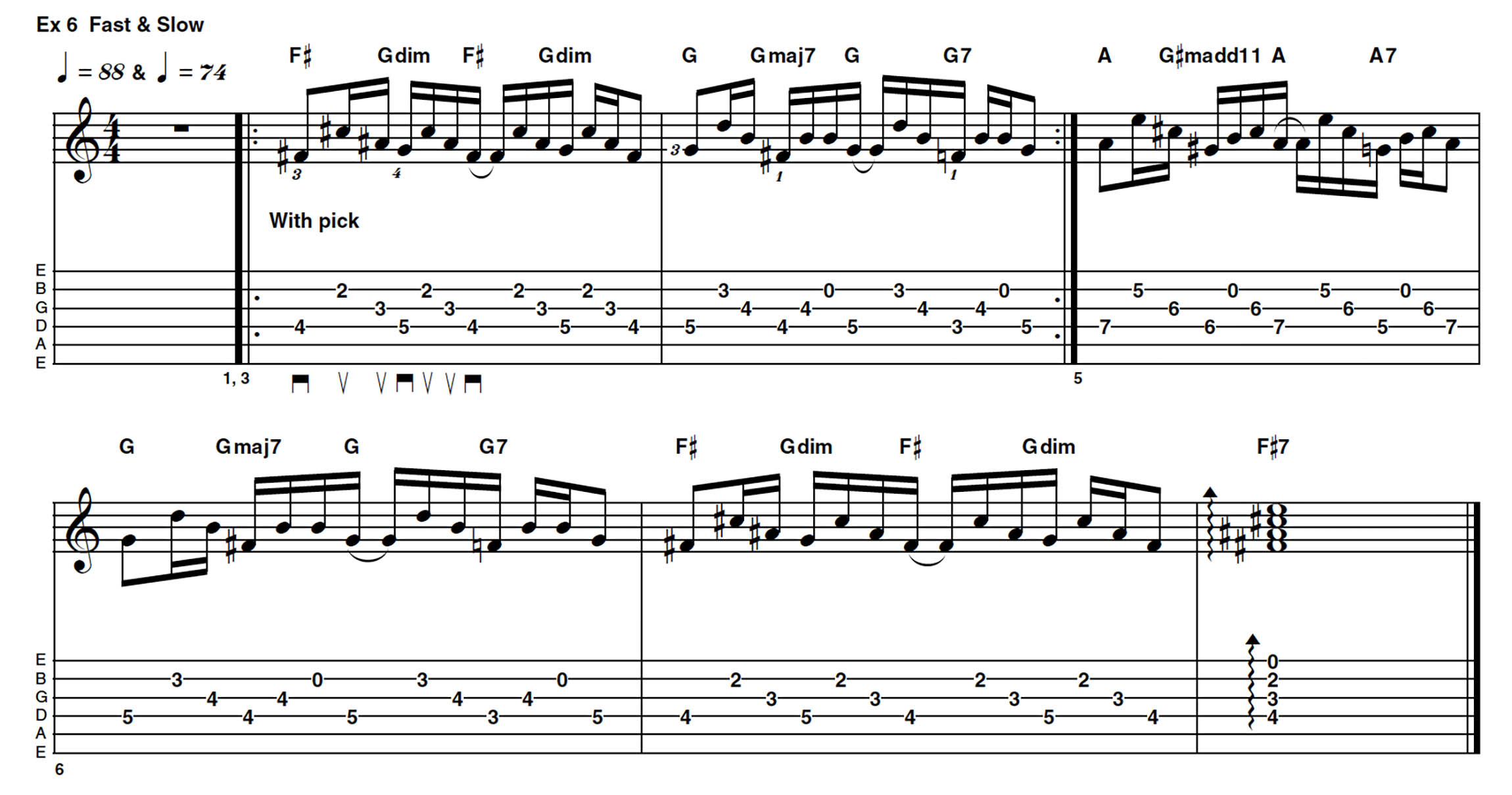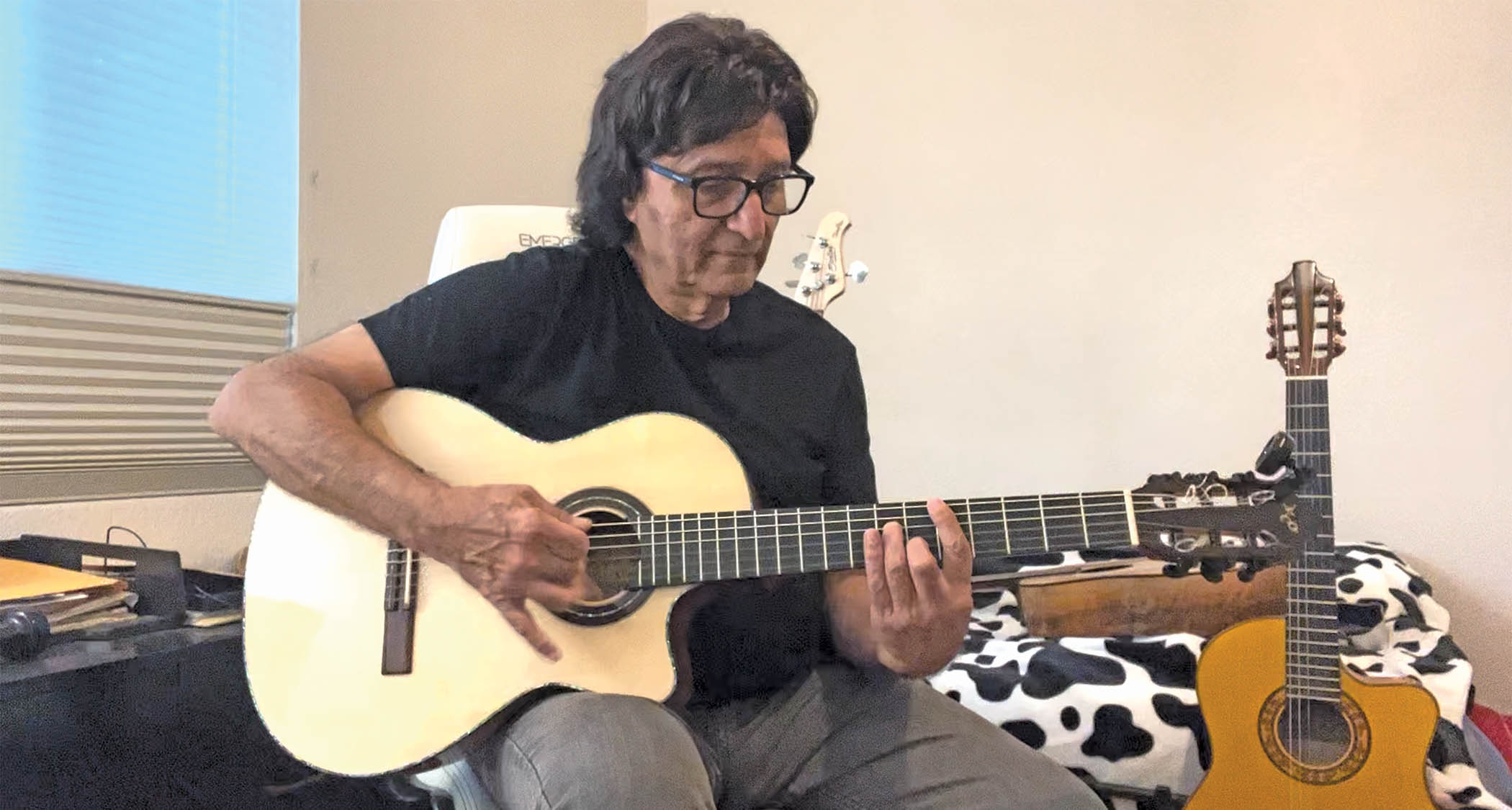
In this feature, we present the brilliant Iranian acoustic guitarist, Ardeshir Farah. Ardeshir has recorded no less than 21 albums as a co-composer and guitarist in the acoustic duo Strunz & Farah, alongside the equally fantastic Jorge Strunz, an acoustic master from Costa Rica.
Strunz & Farah were nominated for a Grammy and blend together Latin, jazz-fusion and Middle Eastern sounds to create their influential style of acoustic guitar magic.
In this video, Ardeshir demonstrates six of his favourite nylon-string examples at both fast and slower tempos and we have provided full tab for you to learn from. Closely watching Ardeshir play will help to unlock his amazing musicality.
The phrases in the six examples are tasteful and well-chosen and come from a mixture of scale ideas and patterns. There is also some vibrant flamenco style rhythm included for good measure.
All of the examples are played with the guitar pick and Ardeshir prefers to pick as many of the notes as possible. This makes for a solid articulation and rhythmic delivery. Ardeshir employs the fingers of his picking hand to provide extra facility for the fast rasqueado-style strumming flourishes shown in example five.
The main influences at play here are Spanish flamenco guitar and also the sounds and harmony of the Middle East. Scales like the fifth mode of the harmonic minor, the Phrygian dominant (R-b2-3-4-5-b6-b7) summon that area’s evocative flavour.
While the picking hand fingers are most usually used when playing fast flamenco runs, Ardeshir favours the plectrum. His alternate picking technique provides very fast, rhythmic results with plenty of attack.
Ardeshir also likes to include chromatic notes in order to link the stronger primary notes (eg 3rd, 5th, 7th) in the runs. They also provide plenty of extra colour.
Some of the phrases here are played at breakneck speed so take it slowly and build up to tempo. Ardeshir demonstrates all examples at a slower pace, but for practice purposes we’d recommend starting even slower to ensure accuracy in the delivery.
Ardeshir uses various rhythmic subdivisions and explains his choices in the video. We start off with some rather brisk 32nd notes (eight notes per beat). Thirty-second note runs are unusual, so you may need to acquaint yourself with the feel of this particular note subdivision.
Ardeshir also uses the 16th-note triplet (six notes per beat), which sounds fast and impressive. Example 4 uses the more standand 16th-note subdivision (four notes per beat). All the examples are played in the common 4/4 time signature.
Our notation contains all of the articulations and phrasing from the video performance. It’d be well worth taking a close look at the way Ardeshir fingers and picks the phrases, even if it’s not ultimately how you choose to approach them.
Ideally, there will be new techniques, licks and phrases here that you like and will perfect. For those, aim to memorise them and use it in future solos. Enjoy!
Get the tone
Amp Settings: Gain 7, Bass, Middle 7, Treble 6, Reverb 3
For this recording Ardeshir uses nylon-string acoustic guitars. The nylon certainly strings provide an evocative sound and tone, but are not essential should you wish to try out the examples.
Any guitar will work perfectly well for practising and performing them. If you are using an electric guitar we’d recommend starting on a clean tone with the neck pickup selected.
Some of the faster lines could benefit from the compression provided by some light dynamic overdrive but be prepared to experiment with the guitar’s controls to achieve the desired sounds. A little reverb, delay or even chorus pedal can be added for that final touch of classy ambience.
Example 1. Fast alternate picking
Note that all the examples have fast and slow versions. Our first one combines the 32nd-note subdivision (eight notes per beat) with two modal scales. The first is A Phrygian dominant (A-Bb-C#-D-E-F-G) and the second is D Aeolian or D natural minor( D-E-F-G-A-Bb-C).
The G# note is in neither of these modes, but works as a passing tone. Start at a much slower tempo than even our slow metronome marking (eg four notes at 75bpm), to ensure a steady delivery.
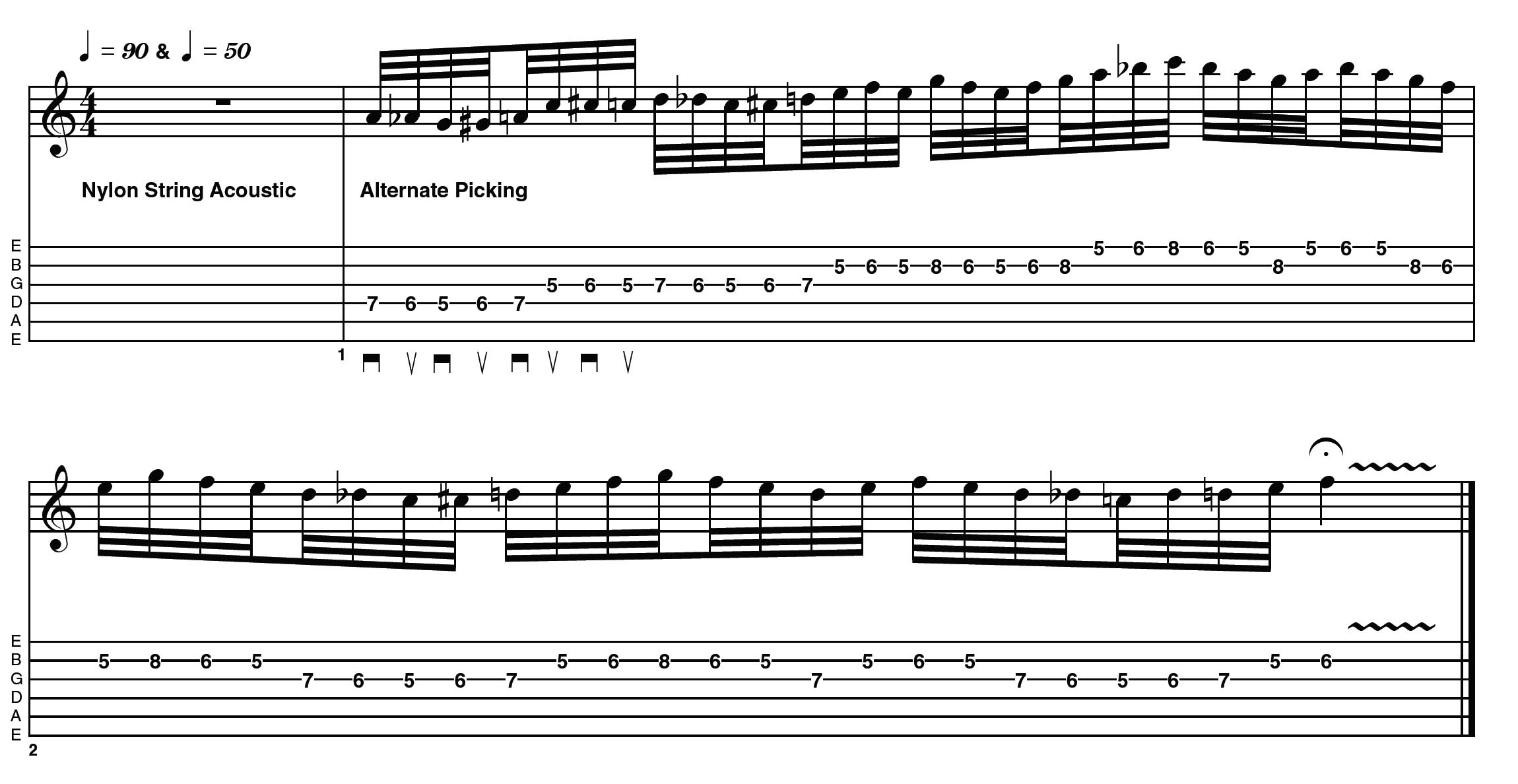
Example 2. B natural minor sextuplets
Our second example uses B Aeolian mode (B-C#-D-E-F#-G-A) as a canvas. The 16th-note triplet (sextuplets) subdivision places six notes in the space of a beat. This line is created by repeating the same pattern.
The pattern is played across two strings and extra mileage is obtained by repeating it on different two-string pairings in a descending fashion. Again, we’d recommend taking this slowly to get the patterns properly under the fingers.
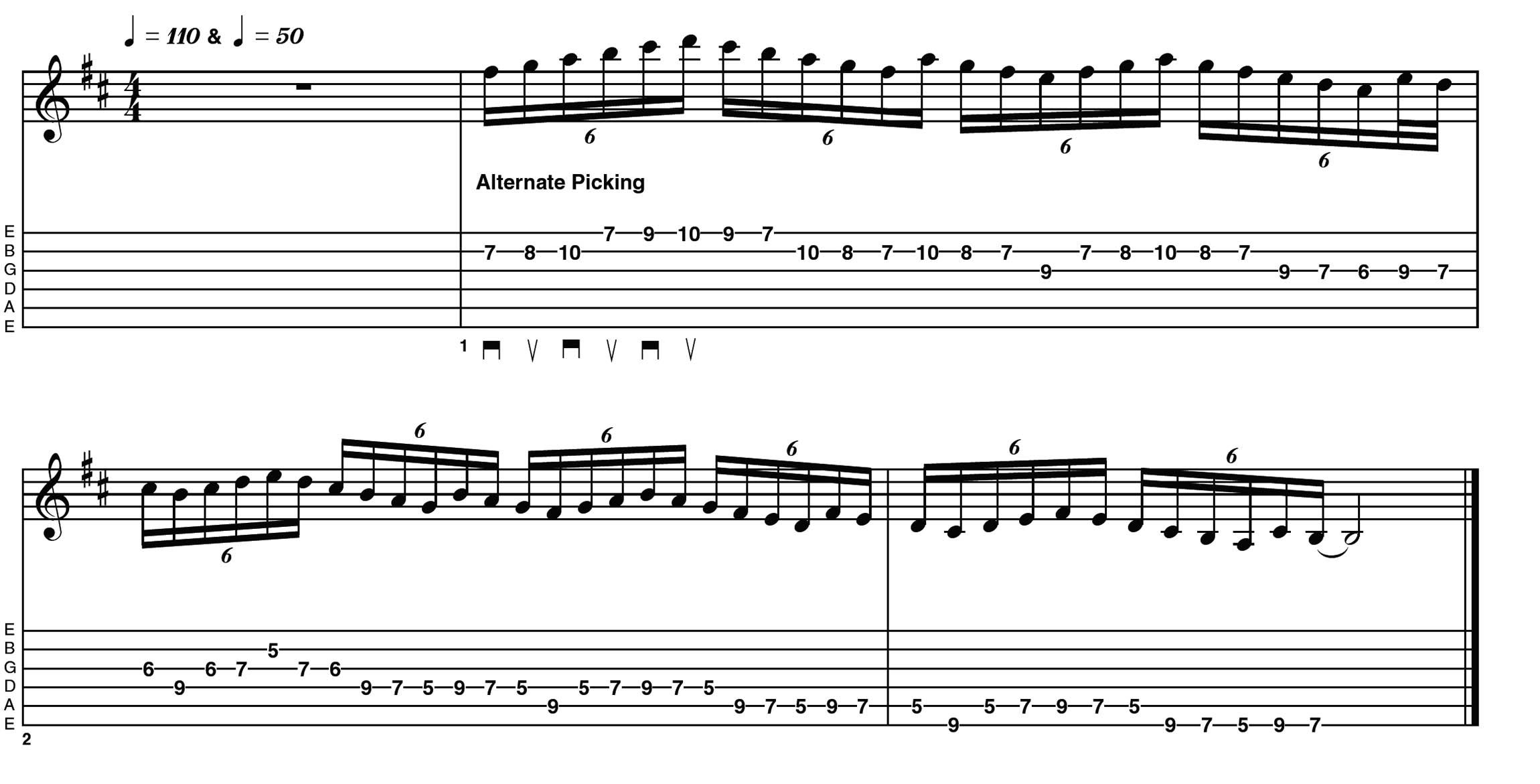
Example 3. Ascending the fretboard
This example is a four-note pattern played across the second and third strings. The whole-tone fingering makes it moderately comfortable to articulate this pattern at speed. Also note that it can be moved up one fret at a time to create an exciting, ascending line that builds to a crescendo.
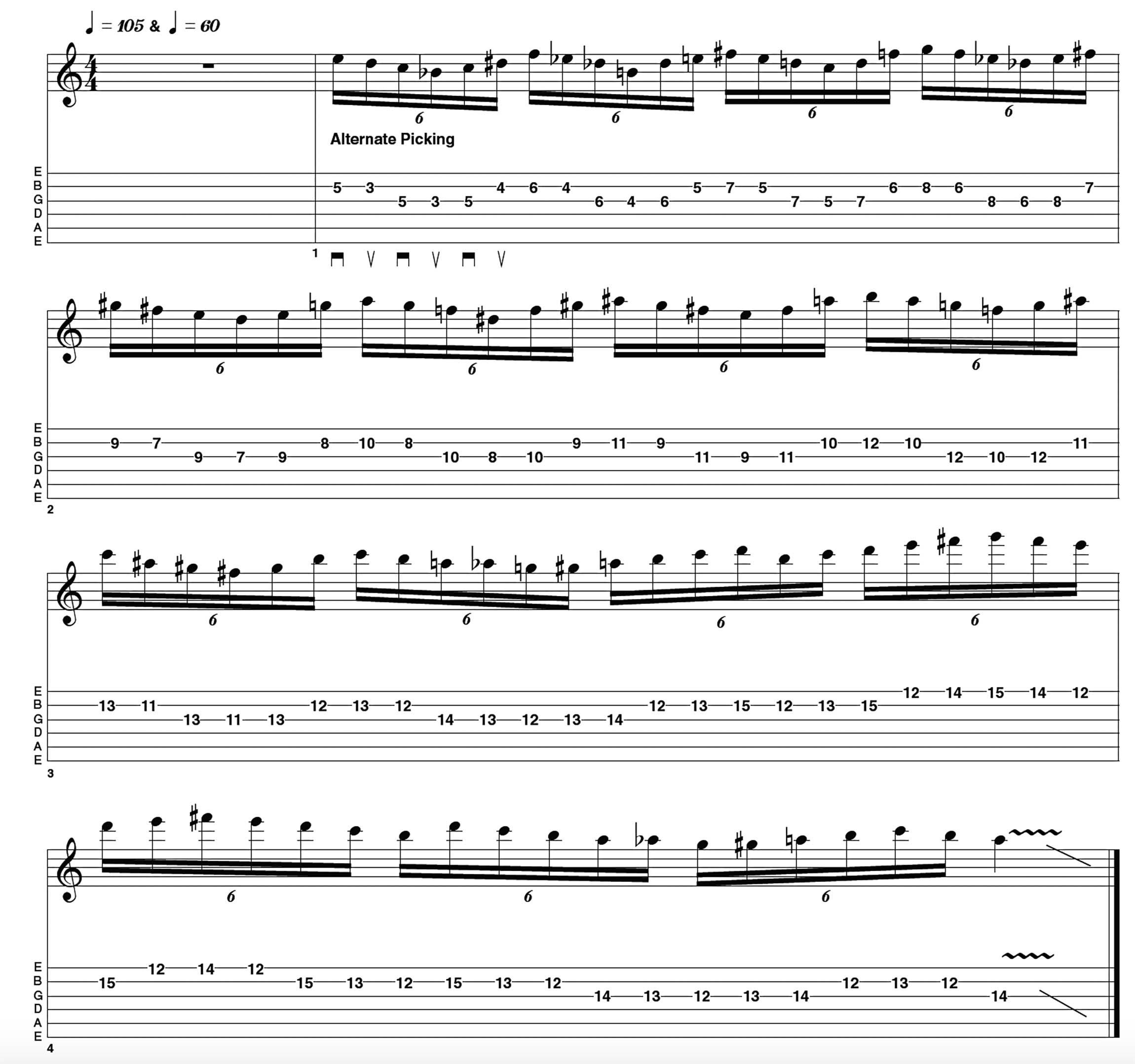
Example 4. A Dorian using 16th notes
More 16th-note subdivision here, this time combined with the A Dorian mode (A-B-C-D-E-F#-G). The Eb/D# and G# chromatic notes provide b5 and maj7 colour, suggesting an exotic blues-orientated flavour.
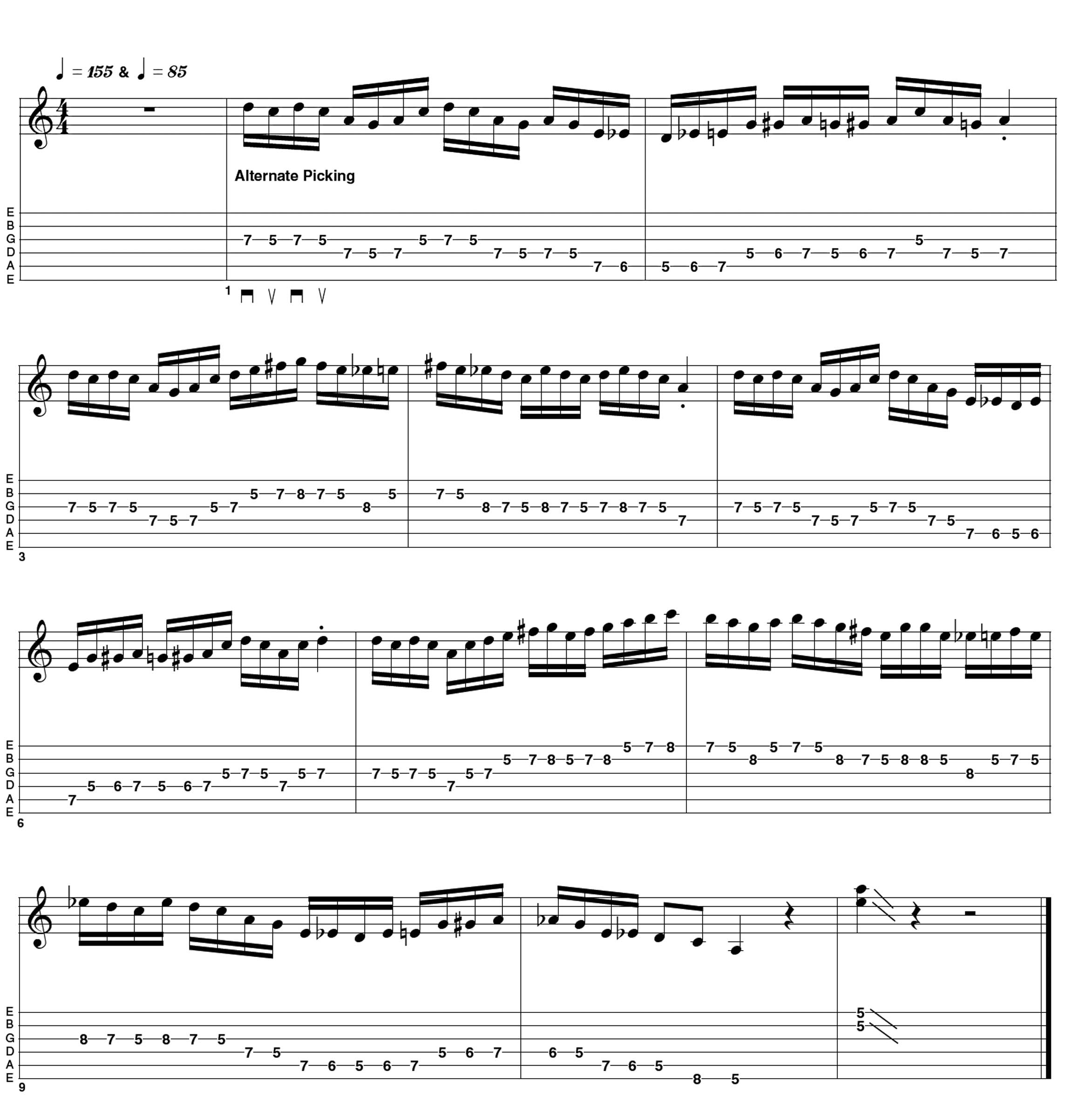
Example 5. Vibrant chord strumming
Here, Ardeshir demonstrates colourful chord strumming . This is in the rhumba style that forms the basis of many Strunz & Farah compositions.
This rhythm can be played with or without the pick; here the pick is used other than for the fast triplet flourishes where he flicks his fingers out in a rasgueado style.
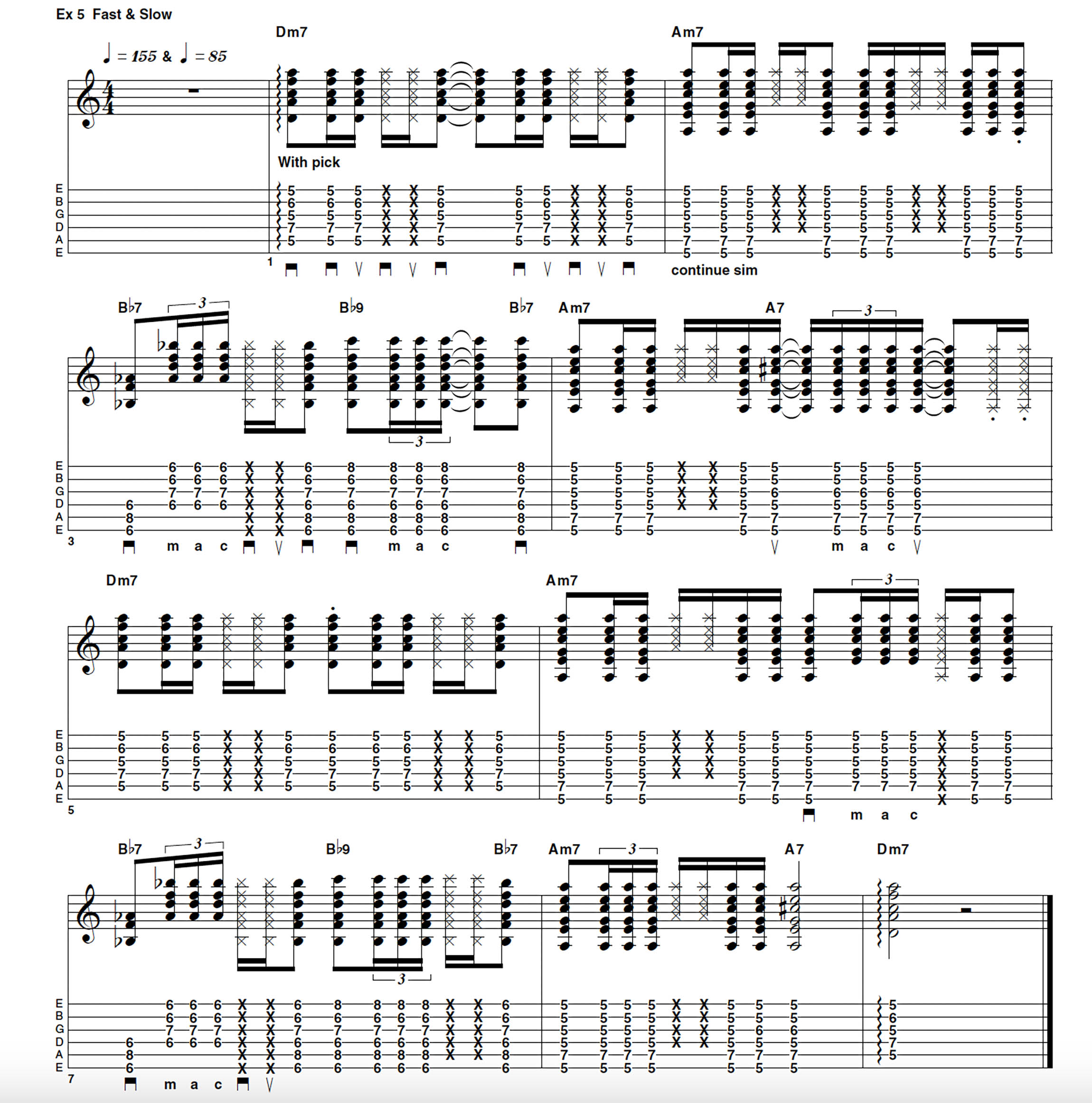
Example 6. Rhythmic arpeggios
For the final example, arpeggios combined with open strings create a very evocative rhythmic pattern.
All the notes are picked with the plectrum (down-up-up), but this approach will also work well if using fingerstyle technique (p-m-i), or even using a hybrid approach (down-a-m). See what suits you best.
